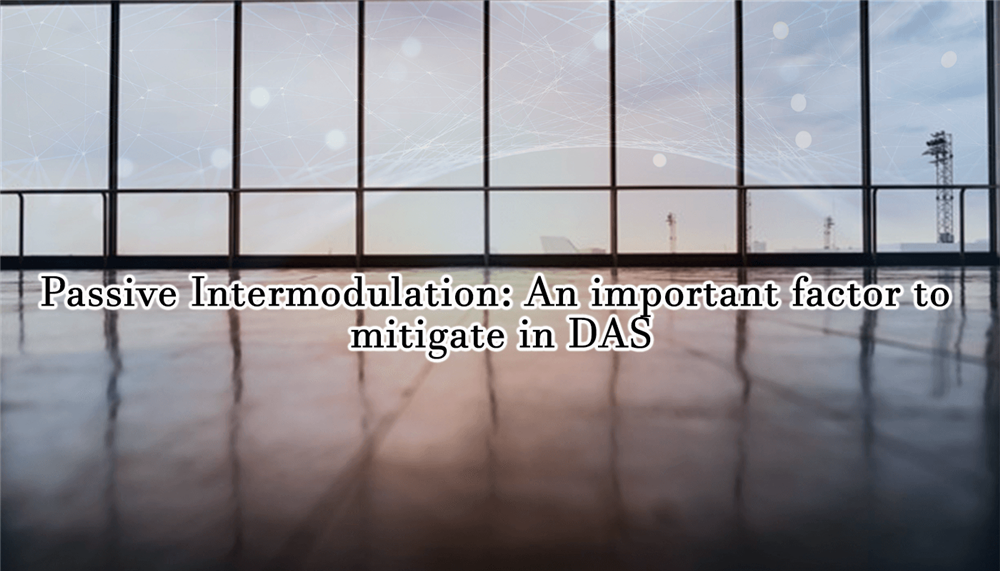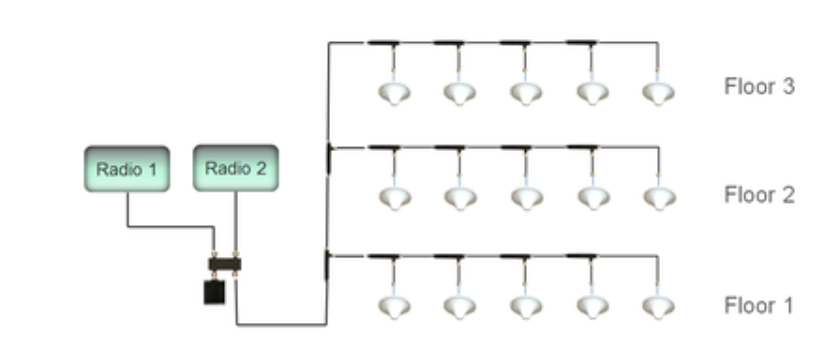Passive Inertmodulation: An important factor to mitigate in DAS
 \
\
ePIM is described as a form of signal interference that can be caused by either metal components near Passives or two or more carriers sharing the same downlink path in a wireless network, which is becoming more common as wireless networks have become more complex with multiple technology generations such as 2G 3G, LTE and now we will be moving towards 5G. The signals combine to generate unwanted interference, which impacts the signal.
A lot of importance has been given to mitigate PIM nowadays, the reason being the increase in data usage especially indoors, has pushed operators to increase the spectrum for LTE Deployments, which calls for additional frequency bands combined into Indoor DAS by each operator. To stay competitive Telecom operators care a lot about user experience, and PIM is a big hurdle in providing the great user experience. The unwanted signals produced can degrade call quality and reduce the capacity of a wireless system.
High PIM means bad cellular connection and limited bandwidth to the end user, which in turn means lost customers for the operator. Low PIM means strong signals with more bandwidth for more users, which means happy customers and higher revenues for the operator. From a hardware perspective, it means that each and every connection must be designed to minimize PIM and tested to ensure it is installed properly.
Reports show that a slight increase in PIM value could have drastic impacts on downloading speeds. At this point, we should also consider what PIM value is usually acceptable. Well, the answer to that is it depends on which passive products are we talking about. For instance, the products that are close to the base station or the first passive component right after base station (POI, Splitter, and Coupler); -160dBC PIM rating is recommended because of the high power generation of the base station. On the other hand, the passive components that are far away from the base station -150dBC PIM rating would do the job too. By the time the signal reaches the antenna, the RF power is much lower, typically on the order of 100mW (20 dBm). Given the low power level and the high loss between the antenna and the signal source, it’s hard to believe that PIM generated at or beyond the antenna could possibly be high enough to impact system performance. Experience shows that due to the highly non-linear objects often found near antennas, harmful PIM is still possible. This is especially true at low frequencies (700 MHz, 800 MHz and 900 MHz) where the probability of PIM sources occurring inside the antenna’s near field increases. For this reason, PIM is still a concern at or beyond antennas in a DAS.
Regardless of the DAS architecture (Active or Passive DAS), there will be sections where PIM can occur. In a purely Passive DAS, everything beyond the operator’s radio is a place where harmful PIM can occur. With the many splitters, combiners, coaxial cables, and antennas required to distribute the RF signals, the possibility of PIM is in a large number of places. In the image shown below, there are over 150 locations where PIM could occur:
• 64 RF connections
• 31 cable assemblies
• 15 antennas
• 14 power dividers
• 1 hybrid combiner
• 1 RF termination

Linearity in Distributed Antenna System can be improved by using components that are factory tested for PIM, making sure all RF connectors are tight and clean, apply correct assembly torque, and locating antennas away from PIM sources such as pipes, lighting fixtures, and fans.
